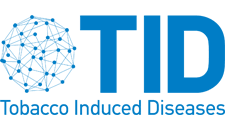View Item
- xmlui.general.dspace_homeCentros Regionales y EEAsCentro Regional Patagonia NorteEEA Alto ValleArtículos científicosxmlui.ArtifactBrowser.ItemViewer.trail
- DSpace Home
- Centros Regionales y EEAs
- Centro Regional Patagonia Norte
- EEA Alto Valle
- Artículos científicos
- View Item
Tobacco and end stage renal disease: a multicenter, cross-sectional study in Argentinian Northern Patagonia
Abstract
Background: Smoking and chronic kidney disease are major public health problems with common features -high prevalence and mortality, high cardiovascular risk, gender differences and high prevalence in low income people-, but the link between them is poorly recognized. Our objectives were to investigate the exposure of dialysis patients to tobacco and to know their smoking behavior.
Methods: We performed a multicenter, cross-sectional study in nine
[ver mas...]
Background: Smoking and chronic kidney disease are major public health problems with common features -high prevalence and mortality, high cardiovascular risk, gender differences and high prevalence in low income people-, but the link between them is poorly recognized. Our objectives were to investigate the exposure of dialysis patients to tobacco and to know their smoking behavior.
Methods: We performed a multicenter, cross-sectional study in nine dialysis units in the Argentinian Northern Patagonia. We investigated smoker status, lifetime tobacco consumption, current tobacco use, breath carbon monoxide and % carboxyhaemoglobin. Fagerström and Richmond tests were performed for active smokers. Statistical analysis: one way ANOVA and Tukey’s test for post hoc test. For exploratory analysis, frequency tables through chi-square distribution and single correspondence analysis were performed.
Results: Six hundred thirty six patients (60.9 % males, 39.1 % females) were interviewed. Almost 70 % of them had had tobacco exposure. Excluding light smokers, the lifetime consumption was significantly different (p = 0.0052) between sexes (33.1 ± 2.4 pack/years in males and 18.2 ± 2.1 pack/years in females) The distribution of etiologies changed significantly (χ 2 p < 0.0001) with smoker status and the dose of tobacco smoking, with an increase in the diagnosis of nephrosclerosis in patients with high and very high lifetime consumption (from 16.1 % in non-smokers to 28.2 and 27 % respectively), and in passive smokers (from 16.1 to 27.3 %). The male preponderance of end-stage renal disease disappeared when only non-smokers were considered and grew with the increase in the lifetime consumption. Active smokers have small consumption, both low CO level and % COHb, low dependence and a good motivation to quit, but a high lifetime consumption.
Conclusions: Exposure of dialysis patients to tobacco is high and could be related to the progression to the final stage of the renal disease. It seems that tobacco renal damage is mostly hidden in the diagnosis of nephrosclerosis. The gender difference observed in these patients could also have a nexus with the men’s higher tobacco exposure. Active smokers have a low current consumption but a high lifetime tobacco dose.
[Cerrar]

Author
Alba, Maria M.;
Citarelli, Alicia N.;
Menni, María Fernanda;
Agricola, Maria;
Braicovich, Alejandra;
De Horta, Eduardo;
De Rosa, Fernando;
Filanino, Graciela;
Gaggiotti, Raul;
Junqueras, Nelson;
Martinelli, Sandra;
Milan, Adriana;
Morales, Mabel E.;
Setti, Silvia;
Villalba, Daniel O.;
Fuente
Tobacco Induced Diseases 13 : 28 (September 2015)
Date
2015-09
Editorial
International Society for the Prevention of Tobacco Induced Diseases
ISSN
1617-9625
Formato
pdf
Tipo de documento
artículo
Palabras Claves
Derechos de acceso
Abierto
 Excepto donde se diga explicitamente, este item se publica bajo la siguiente descripción: Creative Commons Attribution-NonCommercial-ShareAlike 2.5 Unported (CC BY-NC-SA 2.5)
Excepto donde se diga explicitamente, este item se publica bajo la siguiente descripción: Creative Commons Attribution-NonCommercial-ShareAlike 2.5 Unported (CC BY-NC-SA 2.5)


